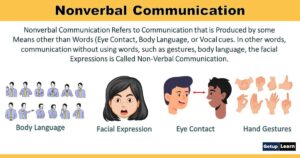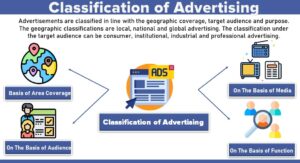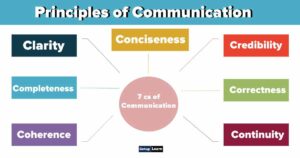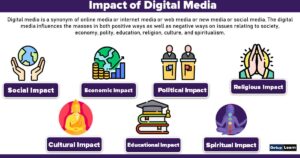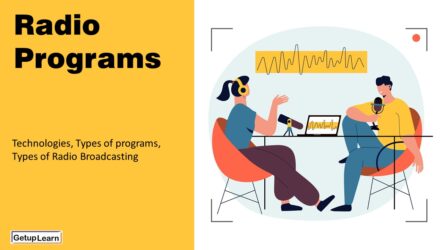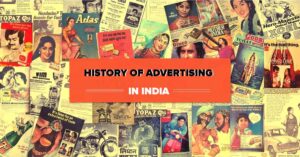Table of Contents
What is Magazine?
A magazine is a publication that is issued periodically. It generally contains essays, stories, poems, articles, fiction, recipes, images, etc. Magazines are directed at a general and special audience, often published on a weekly or monthly basis.
A magazine can also be considered as a cabinet of curiosities; i.e. a display case in which interesting, unusual, and occasionally ‘eccentric’ objects are collected and displayed as a conversation piece or an expression of the writer’s wide-ranging interests or tastes.
The readers are treated with a fascinating, mind-expanding, and unique set of wonders they had never dreamt of.
Characteristics of Magazines
Characteristics of magazines While popular magazines provide broad overviews of topics, scholarly journals provide in-depth analysis of topics and report the findings of the research, and trade magazines report on industry trends, new products, or techniques.
A popular magazine that caters to the general public uses non-technical language. The contents of these magazines include interviews, general interest articles, and various types of features. They usually cover a wide range of topics based on research, source comments, and generalizations.
Articles are usually written by a staff writer or a journalist; in some cases, interesting articles of freelancers are also encouraged. They generally contain many interesting and sometimes sensuous photographs to attract readers.
In general, magazine articles are easy to read, fairly brief in length, and may include illustrations or photographs. Magazines don’t necessarily follow a specific format or structure in writing the articles.
Its attractive appearance, eye-catching cover pictures, and illustrations on quality paper make it more appealing to the reading public. Magazines also contain many colorful and impressive advertisements.
Difference between Newspaper and Magazine
Newspapers and magazines are two important forms of print media that are read by millions of people around the world. Some of the most common differences between newspapers and magazines can be seen through their size and appearance, content, style, target audience, design and layout, readability, and advertisements.
Let’s discuss the difference between newspapers and magazines:
- Size and Appearance
- Content
- Style
- Design and Layout
- Target Audience
- Readability
- Display Ads
- Visual Strength
- Shelf Life
Size and Appearance
Newspapers are bigger in size and they can be folded. A story above the middle fold on the front page of a newspaper is considered the most important story and one that appears just below the fold is generally the second most important story.
If there are many important stories on a newspaper page, then the treatment given to a story will decide its importance: such as photos/graphics with a more important story and with no visual elements in other stories. The eyes of a reader can scan an entire page without a fold.
A magazine tends to have a “book-type” size while the newspaper is really meant to be spread at arm’s length for the reader to grasp its contents.
Content
Newspapers deal with reports clearly, briefly, and objectively. A magazine writer focuses on specialized topics and current issues of public interest. Newspapers remain the primary source of authentic, reliable, and latest information about what is happening around the world and even in one’s own locality.
But magazines are not sources of fresh content to the extent of publishing the breaking news. However, its content is specialized and recent in nature. Thus, we have various magazines such as entertainment, science, share markets, sports, glamour, and movies.
Newspapers are more versatile in content and hence they never fall short of content as there is always something happening in different parts of the world. On the other hand, magazine content is always based on the liking of readers of diverse backgrounds.
Style
Newspapers focus on catchy headlines to create interest in the reader. Many reporters and editors are employed in newspapers to prepare specialized reports and interpretative articles. But magazines have lesser staff. A magazine writer has more freedom to express or has more room for subjectivity.
She/he has the tenacity and freedom to express things in a creative manner. It further enhances the writer’s mastery of the expression by imploring these seemingly circular methods of self-expression.
The newspaper writer on the other hand is compounded to a somewhat strict, strong, and straight writing mostly based on facts and figures.
Design and Layout
Newspapers are known for their simple layout and design. While the content is usually in black and white, the style and font are fairly consistent throughout. Magazines have much more visual expression than newspapers because magazines are not subject to one consistent layout.
Magazines use lots of colors, and different types and sizes of fonts, and break up their articles with images and colors.
Target Audience
The main difference between a newspaper and a magazine is that newspapers are written for a general audience, while magazines are for specific types of audiences. A magazine attracts varied target audiences. A newspaper’s target audience is determined by its geography and its focus is broad.
Here, the editor determines what the people should read, what they want and desire. In contrast, a magazine’s target audience is determined by demographics and interests. (‘Demographics’ means the physical characteristics of the individual such as race, gender, interest, education level, etc.).
Readability
News stories are usually written in a matter-of-fact style. But magazines employ colorful language so as to make the content enjoyable.
The newspaper readability level corresponds to a difficult classification built around tight grammatical and syntactical rules. Linguistic subjectivity which relies on expressive adjectives enhances the readability of magazines.
Display Ads
Though magazines and newspapers both provide readers with information, their format and appeal differ considerably. Magazines are more advertiser-driven than newspapers. Newspapers are slightly different in this regard. Newspapers are driven more by readership than by advertisers.
They focus more on catchy headlines in an effort to capture the reader’s interest and get him to read the entire story. Part of the reason for this is that people often associate what they read with an ad they see near the piece. Our minds just naturally attach and group objects and associations together.
Advertising giants know this and place their ads exactly in proper alignment with stories and articles they want to associate with their products on those specialized magazines.
Visual Strength
The visual strength of magazines is enhanced with the effective use of color in magazines. In magazines, we can also use a color background whereas newspapers normally have only a white background. This means you can present more attractive color contrasts in your magazine visuals.
Shelf Life
Another strength of magazines is a longer life. Newspapers are read only once and then discarded. In contrast, magazines are commonly kept for several days, weeks, or months in magazine racks which provides for possible repeat reading.
Magazines use some of the highest-quality paper and ink to produce a visually appealing product meant to be kept and read longer than a newspaper. Magazines tend to focus on entertainment pieces, and provide how-to-do articles and features about certain subjects within their chosen marketing niche.
Magazines also have advertisements taking up large amounts of page space to balance the cost of production.
Basics of Magazine Writing
The joy of magazine writing lies in its variety. Anything from a celebrity interview to a food recipe can be the topic for magazine articles and this variety demands versatility. Coverage of events for magazines offers challenges as well as opportunities to journalists.
A creative flair and innovative skill may help in producing masterpieces and also in creating an everlasting impression on the reader’s mind. The language used depends, to a certain extent, on the objective of the magazine.
Literary style is generally preferred by the magazine press. Thus magazine writing requires a different way of thinking, writing, and structuring. Effective magazine writing is accessible, interesting, lively, colorful, grabbing, and relevant.
Whatever be the type of publication a journalist writes for, the basic approach is the same: write for your readers. However, good writing for magazines depends on the adherence to some well-known guidelines.
Though there are not many lengthy rules, there are guidelines a magazine writer should follow to produce a stylish copy. The most important among them can be summarized as follows:
- Know whom you are writing for, their interests and concerns.
- Know what you want to say and achieve.
- Always prefer the concrete to the abstract.
- Be accurate and readable.
- Have an attention grabbing intro.
- Spend considerable time thinking about fresh ways to ap-proach the subject.
- Keep materials and sentences short.
- Promote a vibrant style.
- Know the publication’s editorial policy to achieve your di-rection.
Magazine writers often develop a strong personal style that is opinionated, anecdotal, and gossipy while developing the content. The quality of the content and style are equally important. The wordplay and tricks of style make the piece entertaining to read.
How to Structure Magazine Article
As soon as you’re ready to write a magazine article, you need to think about structure. With magazine articles, you can move beyond the inverted pyramid style of news by scattering important points throughout the article.
- Tell a Story
- The Beginning
- The Middle
- The Ending
- Extra Credit
Tell a Story
The important thing to remember is that you’re telling a story to your readers. That means you need a beginning, a middle, and an end. It also means you need to think about where you’re taking your reader and create a logical path to that endpoint.
The Beginning
To get people to read your article, you need to find a way to grab them. For example, you can begin an article with a quote or an anecdote from a person’s life. However, you can also set the scene or use anything that will attract the reader’s attention.
The Middle
With most magazine articles, you talk to a person or people. People like reading about other people, so if your interviewee says something good, use a quote rather than the reported speech. This makes your magazine article more interesting.
The Ending
Finally, end with a bang. This could be in the form of an important point, a revelation, or another anecdote or quote. The idea is to satisfy your reader and to get that reader interested in your other writings as well.
Extra Credit
When you do research for an article, you often have information left over that didn’t make it into the main piece. Don’t get rid of this. Use it to create a sidebar or table (editors will love this), or as the starting point for another article.
Magazine Writing Styles
Let us now discuss some of the common styles used by the magazines in their presentation of articles:
- Narrative Writing
- Serialised Narrative Writing
- Descriptive Writing
- Persuasive Writing
- Imaginative Writing
- Visual Writing
- Multiple Inverted Pyramid
Narrative Writing
Narratives are works that provide an account of connected events. In a narrative style, you’ll need to tell a story in such a way that the audience learns a lesson or gains insight. Narrative writing is a type of writing in which the author places himself as the character and leads you to the story.
Here, is a narrative, a story or event is told through characters and dialogues. Narrative writing has definite and logical beginnings, intervals, and endings. Narrative writing uses many literary techniques to provide deeper meaning for the reader and it also helps the reader use his / her imagination to visualize situations.
Literary techniques include metaphors, similes, personification, imagery, hyperbole, alliteration, back story, flashback, flash-forward, foreshadowing, and narrative perspective or point of view.
Serialised Narrative Writing
In this style, you cannot find out what’s going to happen next. You have to wait. Here the writer really understands how to hold a reader by his/her side and make them stick on with the piece till the end. That’s the skill absolutely essential for this style of writing.
The first and most essential quality of a serial narrative is that it has to be immensely, intensely, and inescapably readable. They should have a powerful pull on all readers with the power of a delicious sense of enforced writing.
Descriptive Writing
Descriptive writing focuses on describing a character, an event, or a place in great detail. It is sometimes poetic in nature in which the author specifies the details of the event rather than just the information of that event.
In a descriptive style, the writer needs to describe a person, object, or event so vividly that the reader feels like s/he could reach out and touch it. The writer attempts to convey as many of the senses related to the subject as possible for a clearer understanding of what is being described.
Descriptive writing has a unique power and appeal, as it evokes sensory description through sights, smells, sounds, textures, and tastes through the text to your reader.
Persuasive Writing
This writing revolves around convincing someone. Persuasion requires great skill and effort to convince your readers to endorse your opinion or viewpoint. You write with the sole objective of persuading your readers. Persuasive writing utilizes the power of words to confidently and passionately convey a very important matter.
Such writings are usually written with precision and authority. Persuasive texts are set out to argue and prove a case by presenting ideas that follow a logical progression. It aims to convince a targeted audience of the validity of a viewpoint on an issue by presenting logical arguments.
Imaginative Writing
Imaginative writings present ideas, issues, and arguments in an imaginative and credible way through the description, characters, settings, figurative language, the five senses, etc. Imaginative writing assumes the form of fiction, specifically short stories.
Depending on the idea, the imaginative article can discuss anything from space travel to civil rights. Because of this wide variation, some imaginative pieces require a very serious response, while others invite a much more light-hearted, fantastic one.
Usually, imaginative write-ups start with a hypothetical situation and ask how you would respond to it. It should be credible and plausible and must convey information through description and figurative language. Add sensory details and realistic conversation.
Also include imaginary interactions with the characters. The characters should be dynamic in nature and they should see things differently or act differently by the end of the story. Narrate and describe events, characters, and situations.
Visual Writing
Visual writing is a good language for storytelling in any medium. It focuses on the mind, and distinctive details from the intricately interconnected experiences of the individual. Visual writing creates depth, quality, and pacing.
The visual style isn’t an extension of the writing, but it has to be embedded into the writing in a way that the reader may not even be aware of its presence. This means the visual style is not about adding more but enriching an already existing text.
Visual communication engages meaningful experiences and feelings within individuals through richly embedded image symbols which are conveyed either directly through text or indirectly through other senses.
Multiple Inverted Pyramid
In the field of magazine journalism, the term ‘multiple inverted pyramid approach’ refers to a style of writing which informs and entertains the readers through self-sufficiently built plots of information, each of which may be arranged in the form of an inverted pyramid.
The fact is that the idea of the whole story is spilled in the first paragraph itself. The reader can decide whether to continue reading the details or to go into something else. But even if the reader stops at a certain point, this form of writing may provide some essential facts to the readers.
Types of Magazines
Today, there are thousands of magazines worldwide. They inspire, inform, educate and entertain audiences across the globe. Nearly 600 years after the advent of the printing press, magazines continue to change the nature of things throughout the world.
The major types of magazines are briefly explained below:
- General Interest Magazines
- Special Interest Magazines
- Farm Magazines
- Sports Magazines
- Business Magazines
- Environmental Magazines
- Entertainment Magazines
- Automobile Magazines
- Children’s Magazines
- Women’s Magazines
- Men’s Magazines
- Literary Magazines
General Interest Magazines
This type of magazine is published for a wider audience to provide information, in a general manner and the focus is on many different subjects. The main purpose of a general interest magazine is to provide information for the general audience. No background knowledge or expertise is assumed.
Articles usually provide broad coverage of topics of current interest. They are written by journalists, freelance writers, or staff correspondents of the magazine. These periodicals may be quite attractive in appearance, with articles often heavily illustrated with photographs.
The language of these publications is geared to any educated audience. There is no especially assumed target audience. Mere interest and a certain level of intelligence are only required to read and enjoy such magazines.
These are usually published by commercial enterprises, though some are published by professional organizations. Examples of general-interest periodicals are Time, Newsweek, Outlook, India Today, and The Week.
Special Interest Magazines
Special interest publications are magazines directed at specific groups of readers with common interests. Most special interest magazines cater to any specific interests or pursuits. For instance, there are magazines that cover sports, news, fashion, business, music, and so on.
While some attempt to cover all aspects of a broad subject, others are concerned only with a particular element of the general subject. Sports Illustrated, for example, contains stories on practically any sport, but Golf Digest carries only stories related to golf.
Other special interest publications find their audiences through different demographic segmentation. There are magazines published primarily for men (Field and Stream, Gentlemen’s Quarterly (GQ), etc.), women (Woman’s World, Grihalekshmi, Vanitha, etc.), boys (Boys’ Life) and girls (Teen Vogue). Specialized periodicals also serve most professions, industries, and organizations.
Farm Magazines
These are magazines featuring news and information pertaining to the agricultural sector. It is a resource for farmers and vendors of farmers’ markets.
There are various farm magazines that contain information about various farming equipment, farming practices, ideas and technology suitable to small and big farms, raising unusual livestock, growing high-value crops, direct marketing of their products to bring in more income, the latest techniques for growing bountiful, nutritious crops and many more articles that could provide information to the farmers who are their target audience.
They also share the success stories of artisans and farmers, on government policies and programs, and also about how to promote their business by reaching new customers and develop value-added products.
Sports Magazines
A sports magazine usually features articles or segments on sports comprising of many photographic images and illustrations. Some magazines concentrate on all general sports news and related issues while others concentrate on specific sports or games such as football, baseball, athletics, etc.
But the common aim of any sports magazine is to take fans inside the game and provide a mix of columns, features, profiles of their favorite players, scores, statistics, and analysis of the game.
News and information about sports, reviews, interviews, expert advice, player profiles, season previews, predictions, and pre-game analysis as well as quality photos are some of the main ingredients in a sports magazine.
Business Magazines
Most of these magazines are dedicated to the dissemination of information related to particular business areas like accounting, banking, finance, international business, management, marketing and sales, real estate, small business, etc.
They explore the latest news and reviews on current trends in the world of business. Business magazines offer readers an unparalleled look at business and economic news, with incomparable access to business drivers around the globe.
It also provides the most recent news about trends and developments in global business, financial markets, and personal finance.
Environmental Magazines
The aim of this type of magazine is to provide information about environmental issues and to share ideas about our very diverse and dynamic environment so that readers can live more sustainable lives and connect themselves to ideas and ongoing efforts for change, as well as for building a more just and sustainable future.
They cover everything environmental – from the big issues like climate change, renewable energy, toxins, and health to the topics that directly impact the readers’ daily lives: population, poverty, consumption, and the environment in general.
In-depth reviews of major policy reports, conferences, environmental education initiatives, environmental reports, and photos from around the world with an emphasis on human involvement in an environmentally changed scenario are some of the highlighted features of environmental magazines.
Entertainment Magazines
Entertainment magazines are usually glossy in nature and provide entertainment. They usually carry news, original stories, scandals, gossips, and exclusives about celebrities in various entertainment fields such as film, music, TV, fashion, and related similar areas of the industry.
Cultural criticism, beauty, lifestyle trends, and shopping guides also find expression in such magazines. As its main focus is on celebrity fashion or lifestyle, it is graphically rich in nature, featuring many photographs or other images.
Automobile Magazines
Automobile magazines offer a rich and varied examination of the automotive universe in all its forms, illustrated with vibrant photography. They present interesting automotive news in the industry and celebrate the automotive lifestyle and its personalities, past and present.
It also offers insights into emerging trends in the industry and also creates images of whatever comes next in the written and visual form.
Updates in the motor vehicle arena such as newly arrived cars and bikes, contemporary style of vehicles, recommendations to buyers, reviews of newly launched vehicles are some of the attractive elements in these magazines.
Children’s Magazines
The main aim of children’s magazines is to engage children to learn new things through entertainment and to provide memories that last a lifetime. The content is delivered through colorful images, read-aloud stories, and various fun activities that both the parent as well as the child can enjoy together.
Children’s magazines are designed to set young children on the path to becoming curious, creative, caring, confident individuals through reading, thinking, and learning with a wide variety of stories, puzzles, crafts, games, and activities. 3D children’s magazines are now on sale in Kerala.
Women’s Magazines
Women’s magazines play a variety of roles as educators, family counselors, beauty specialists,s and lifestyle experts. Women’s magazines, on many occasions, have become an arena for debate and promotion of education for women.
The personal nature of the content also makes it a unique material specifically for women. The gorgeous photographs, engaging designs, and innovative styles make them attractive.
The outlook of a women’s magazine is an intelligent perspective that is focused on personal style – the way women actually look, think and dress. They reflect the spirit of today’s woman – changing with the times, moving with trends, styles, and fashion.
Men’s Magazines
Men’s magazines bring the latest style tips, travel guides, lifestyle improvement, offering advice and information useful to men on a variety of topics including money, health, sports, cars, adventure, politics, and so on. Men’s magazines use masculinity as a marketing tool.
Literary Magazines
A literary magazine devoted to literature, usually publishes short stories, poetry, essays, literary criticism, book reviews, biographical profiles of authors, interviews, and any content related to literature.
Its aim is to promote literature, encompass an overall sense of the word, preserve indigenous literature and provide a platform for creative writers through its articles.
FAQs About Writing for Magazine
What is the difference between newspaper and magazine?
These are the following points of difference between newspapers and magazines:
1. Size and Appearance
2. Content
3. Style
4. Design and Layout
5. Target Audience
6. Readability
7. Display Ads
8. Visual Strength
9. Shelf Life.
What are the basics of magazine writing?
The following are the magazine writing styles:
1. Narrative Writing
2. Serialized Narrative Writing
3. Descriptive Writing
4. Persuasive Writing
5. Imaginative Writing
6. Visual Writing
7. Multiple Inverted Pyramid.
What are the types of magazines?
The following are the types of magazines:
1. General Interest Magazines
2. Special Interest Magazines
3. Farm Magazines
4. Sports Magazines
5. Business Magazines
6. Environmental Magazines
7. Entertainment Magazines
8. Automobile Magazines
9. Children’s Magazines
10. Women’s Magazines
11. Men’s Magazines
12. Literary Magazines.

